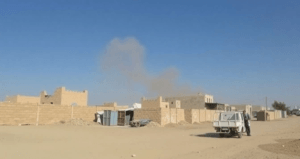Israel Orders Mass Evacuation in Southern Gaza: 5 Critical Developments You Need to Know
Israel has ordered a mass evacuation in southern Gaza, particularly in Rafah and parts of Khan Younis, as it prepares for intensified military operations. This comes amid ongoing negotiations for a potential ceasefire, which could see the release of half of the remaining hostages held by Hamas in exchange for a 40-50 day truce. Prime Minister Netanyahu has reaffirmed that military pressure on Hamas will continue alongside negotiations, with discussions also involving the possible voluntary relocation of Palestinians from Gaza.
The evacuation order, issued during the Eid al-Fitr holiday, has forced thousands of Palestinians to flee their homes, carrying whatever belongings they can. Many are struggling to relocate due to a severe fuel shortage and lack of financial resources, leaving them stranded in an already dire humanitarian crisis. Rafah has been repeatedly targeted throughout the war, with civilians facing constant displacement and overcrowded shelters. Israel resumed its military operations on March 18, 2025, after a failed ceasefire extension, further worsening the suffering of Gaza’s population. Despite ongoing diplomatic efforts, no significant progress has been made toward a lasting peace agreement.

Israel Orders Mass Evacuation in Southern Gaza: 5 Critical Developments You Need to Know
The Israeli military has ordered Palestinians in southern Gaza, particularly those near Rafah, to evacuate their homes as it prepares for renewed operations in the region. This development coincides with ongoing discussions about a potential ceasefire agreement, which could see Hamas release half of the remaining hostages in exchange for a temporary truce lasting 40 to 50 days. Prime Minister Benjamin Netanyahu has reaffirmed Israel’s commitment to maintaining military pressure on Hamas while confirming that negotiations for a hostage deal are still underway.
The proposed ceasefire also includes U.S.-backed proposals, initially introduced during former President Donald Trump’s administration, encouraging the voluntary relocation of Palestinians from Gaza. However, details about how such a plan would be implemented remain unclear. Meanwhile, families in Rafah—already exhausted by months of conflict—are scrambling to flee with whatever belongings they can carry, often using carts, trucks, or even animal-drawn vehicles. They have been instructed to move to designated “safe zones” like Al Mawasi, a coastal area ill-equipped to handle the influx of displaced people.
Humanitarian Crisis Deepens
The evacuation orders follow a brief ceasefire in March 2025 that collapsed after negotiations stalled. Since then, Israel resumed military operations on March 18, intensifying airstrikes and ground maneuvers. The humanitarian situation in Gaza has worsened, with widespread destruction of homes, hospitals, and infrastructure. Severe food shortages persist, exacerbated by limited aid access, particularly as Ramadan concludes. Many families report surviving on just one meal a day, often consisting of canned goods or bread.
On March 31, 2025—coinciding with the Eid al-Fitr holiday marking the end of Ramadan—the Israeli military expanded evacuation orders to include Rafah and parts of Khan Younis. The timing of the directive, during a period traditionally reserved for celebration, has drawn criticism from humanitarian groups. Residents were told to relocate to northern coastal areas, but overcrowding, scarce resources, and a lack of transportation options have left thousands stranded.
Rafah’s Repeated Displacement
Rafah, a city bordering Egypt, has endured repeated displacement. Many of its residents, already uprooted multiple times since the war began, now live in makeshift tents or overcrowded shelters with minimal access to clean water, medical care, or electricity. Fuel shortages and soaring prices have made it nearly impossible for some families to afford transportation to safer areas. “We’ve moved five times since October,” said one resident, referring to the initial escalation of hostilities. “Each time, we lose more of what little we have left.”
Once a refuge for those fleeing northern Gaza, Rafah has now become a battleground itself. Buildings lie in ruins, and streets are littered with debris from airstrikes. Hospitals, overwhelmed by casualties and running low on supplies, struggle to treat the injured. Aid organizations warn that disease outbreaks, including cholera and respiratory infections, could surge if conditions do not improve.
Ceasefire Negotiations Stall
Despite international pressure, ceasefire talks have yet to yield a breakthrough. Hamas insists on a permanent end to the war and a full Israeli withdrawal from Gaza as conditions for releasing hostages. Israel, however, has rejected these demands, vowing to continue its campaign until Hamas’s military capabilities are dismantled. Mediators from Egypt, Qatar, and the United States are working to bridge the gap, but optimism remains scarce.
The conflict has displaced over 85% of Gaza’s population, with many enduring extreme hardship. Parents describe children showing signs of malnutrition, while others speak of sleeping in open fields or under tarps during rainstorms. “There’s no safe place here,” said a mother of four in Khan Younis. “Every time we think we’ve escaped the fighting, it follows us.”
International Reactions
The escalating violence has drawn global concern, with calls for restraint and urgent aid access. The United Nations has repeatedly warned of famine-like conditions in northern Gaza, where aid convoys face delays and security risks. Meanwhile, protests in support of Palestinians have erupted worldwide, and Israel faces growing scrutiny over its military tactics and the rising civilian death toll.
As families in Gaza brace for further escalation, the prospect of a lasting peace feels increasingly distant. For now, survival remains the immediate focus—a daily struggle for food, shelter, and safety in a region ravaged by relentless conflict.
You must be logged in to post a comment.